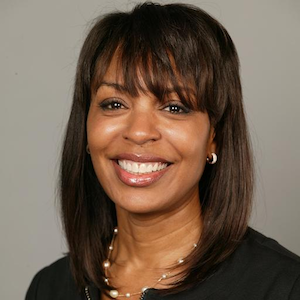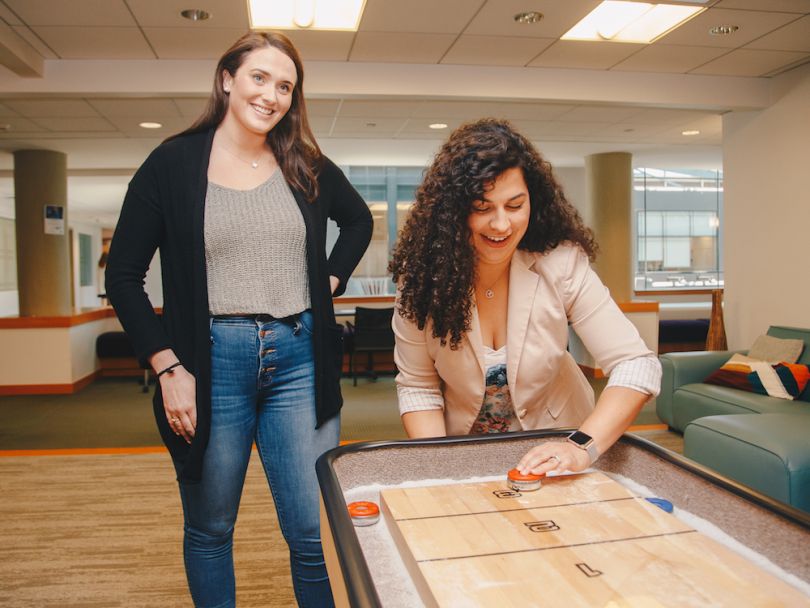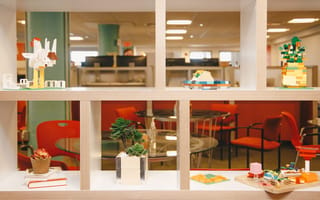Keami Lewis has been busy.
Six months into a new job as VP of People, Organizational Development and DEI at Toast, a Boston-based restaurant management software company, she has already built out a number of programs designed to help employees develop long-term careers there.
That’s impressive enough, but set against the backdrop of an unprecedented social climate — including a pandemic, shifting working conditions and growing civil rights and social justice movements — that progress is all the more remarkable.
In an interview with Built In, Lewis said that while she drew upon programs she’s run in the past, the working conditions imposed by COVID-19 accelerated trends that were already underway in the field of organizational development.
“I’ve been in this space for a while, and virtual learning and tools, gamification and a coaching mentality are all the norm now,” she said. “Those of us in this position are better at it now.”
And Lewis would know. An expert in her field, she has more than 20 years of experience in talent management, having begun her career in internal communications before moving into HR and then the tech industry. She spent more than eight years working at Microsoft before moving to Facebook, then worked stints at the New York Times and PIMCO before landing at Toast.
“I find that it’s a very similar skill set,” she said of her transition from communications into learning and development, “because you’re either trying to change a behavior or mindset or instill a message or mindset.”
With new job shadowing opportunities, rotational programs and job competency frameworks, Toast employees are now similarly reaping the benefits of cross-functional experience, in a way that both furthers their own careers and the capacity of Toast as an organization.

How did the lessons you’ve learned during your career inform how you structure your learning and organizational development programs?
There are three things I’ve taken away from my career so far that apply to both the communications side and the learning, development and building organizational capacity side: You have to be very intentional, you have to make it personal and you have to include everyone.
A company — as well as an individual — has to be very intentional about their career growth, what their purpose is, being honest about where you are in your growth and how you’re going to leverage those skills. I find that companies that are very progressive are good at being intentional, and at the most successful employees are intentional about what they want and what their strengths are.
“Making it personal” means getting in touch with what is important to you. If you’re the manager — or someone like me, who’s creating opportunities for people to develop — make it personal for the person you’re trying to develop. What do they want, what are the gaps and how do you get them there? And as an individual, what is it that you’re trying to do? Be very honest about that and tell people what you’re pursuing. That way, you can build out the proper learning and development path, and close any gaps.
And then there’s the final piece around “including everyone.” In some organizations, there is often a desire to focus on the potential of the high performers over low performers. But I have found over the years that the companies that are most successful believe that everyone is part of this development. You can build this philosophy into your process by making sure that managers periodically pause to ask, “How would you like to grow? Let’s create a development goal to get there.”
I want to ensure we have a full range of development solutions, both for those going into people management and contributors with other professional skills. That way, it can be very tailored towards the individual, whether they want to go be CEO or they just want to get really deep into what they’re doing right now.
Lewis’ 3 Ingredients for People and Organizational Development Success
- Be intentional: Know the strengths and goals of your organization and individuals alike.
- Make it personal: Find out what’s important to your team and your organization. Personalize programs around individual priorities.
- Include everyone: Every player lifts the team — not just high performers.
What if an employee doesn’t know what they want to do, or where they’d like to grow?
First of all, there are a couple questions they need to ask themselves. The first one is: “What do I love to do? What would I do if no one paid me? What are my strengths?”
Let’s face it: We spend a lot of time at work. You might as well love what you’re doing. I tend to take it from a strengths-based perspective — if there are things you love to do, you’ll probably get way better at them than someone who’s being forced to do it.
So I start there and then ask them to look around the organization and ask themselves: “What roles might I like to do, and who do I know in those roles?” I empower individuals to go talk to people who are doing the role that they might want to do. Try a job shadow, investigate what it took to get there, what are all the components behind that position. I want them to get as much information as they can about the place that they think they want to go based on their strengths, interests and desires.
“It’s about talking to a manager or a mentor, creating a little board of directors that can help direct you there.”
The next part is to be honest with themselves and say, “Okay, relative to where I’m at and what I’ve been told I need to be able to do, where am I right now? And how do I start to close that gap? What is the first step that I take?”
For people who already have a job, it’s about talking to a manager or a mentor, creating a little board of directors that can help direct you there. That’s always a great first step. Another first step, depending on their learning style, is to read about others that have done it or reach out to them directly, and get a sense of what brings them excitement. Where do they find that they get lost in time? What are some things that just seem to come natural to them?
So what do these learning and organizational development programs actually look like?
Early in the pandemic, we focused our manager training on working remotely, showing care and empathy, giving feedback and managing performance virtually and retaining your team when they’re remote.
In the early days we were running weekly webinars for our managers, employees and also for alumni who left Toast, providing a program for networking and building your brand.
We’re reconstructing our manager development program so that there are tiers of learning for frontline managers as well as those with more experience. Part of the focus there is to connect managers across the organization.
While we have individual frameworks for each of the teams, now that Toast is growing, it’s time to build out a competency and job structure framework across the company. This will help us with employees’ career development as well. One of the ways we’re intentional about career development as an organization is mapping out what a career here looks like in terms of skills needed, scope and complexity. The idea is that managers, leaders and teams know what they’re working towards, and individuals can look across the structure and say, “I want to do this. How do I get there?”

You’ve also built out rotational and job shadowing programs. Is this to help employees who might want to change career tracks, or to build cross-functional skills?
We’ve actually designed them to cater to both. If you just want to take a look at what another role is like, you can shadow that person for an hour once a month, or once a week. It also creates common understanding across groups that work together.
As for the rotational program, we’re piloting it right now and will launch more broadly in 2021. It’s for anyone who has an interest or a very distinct skill set that another team can leverage. For six months or a year, we’re allowing them to work on very distinct projects where they’re mutually beneficial. I have one pilot in my group right now who’s from engineering. He’s working with us on some of the people initiatives, and he brings amazing project management skills and insights around how our work on the people front lands on the business side, and vice versa.
Over the years I’ve learned that the best heads of HR come from the business side, and the best business heads came from HR. So I’m excited to cross-pollinate in any way we can.
More on Toast
- Founded in 2011
- Toast has raised more than $840 million in funding, including a $400 million Series F in February that brought the company’s valuation to almost $5 billion
- Headquartered in Boston, the company employs nearly 1,600 people across the U.S. and its Dublin office
It’s been a stressful year for a lot of people. How can managers support their teams while remote?
People need to be around people, and this pandemic has demonstrated that for me more than anything else. With a lot of our employees, somewhere near the eighth or tenth week of the pandemic you noticed that even though we had Zoom and webinars all the time, you could tell something wasn’t quite right. And right around that point, they started letting us know that they would be spending the summer with their parents, or gathering with extended family — just a massive indication of our need to be around people. We saw that and we fully supported it, helping people get set up in their new locations.
We also relaxed our performance review cycle. It was more necessary to have more meaningful conversations, and it seemed to help just a little bit. We were really just ensuring that people felt safe, that they were contributing, that they were supported. And when they needed to, giving them the space to move wherever they needed to go.



